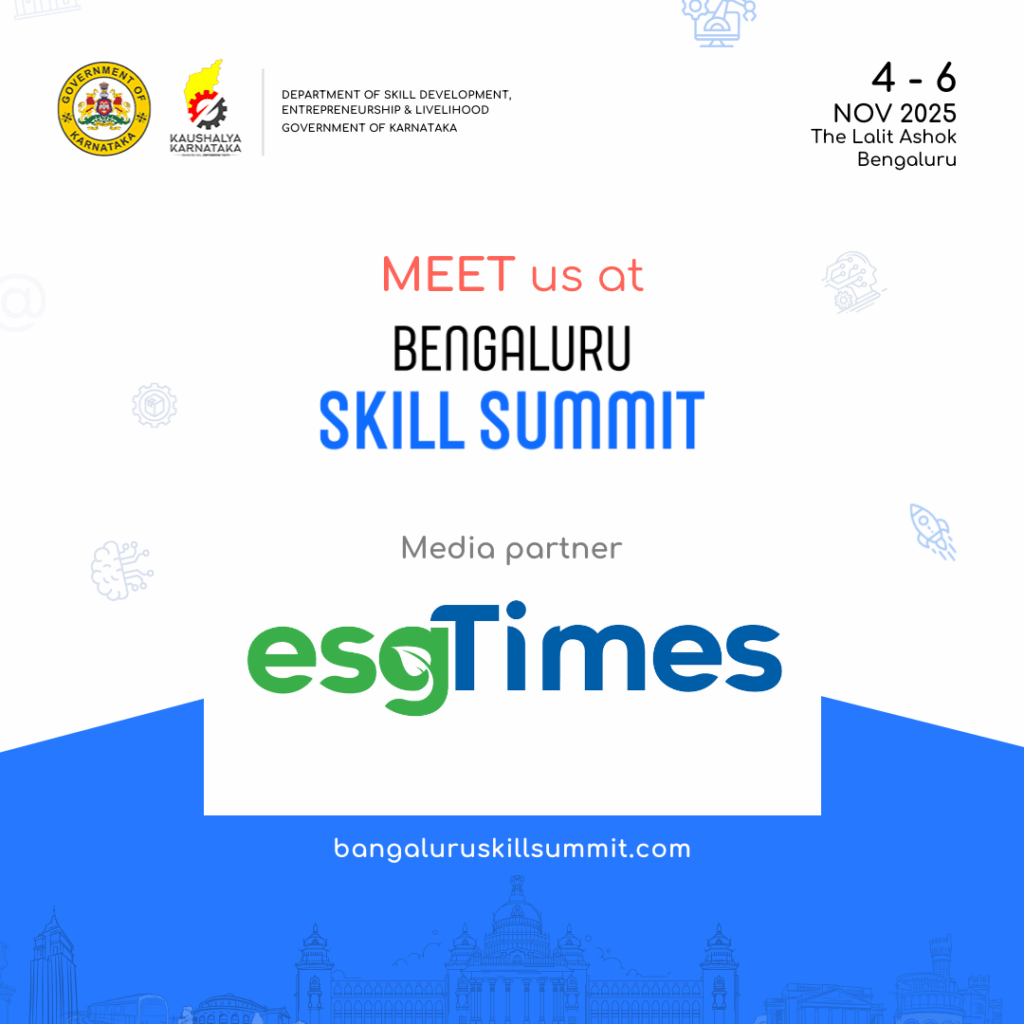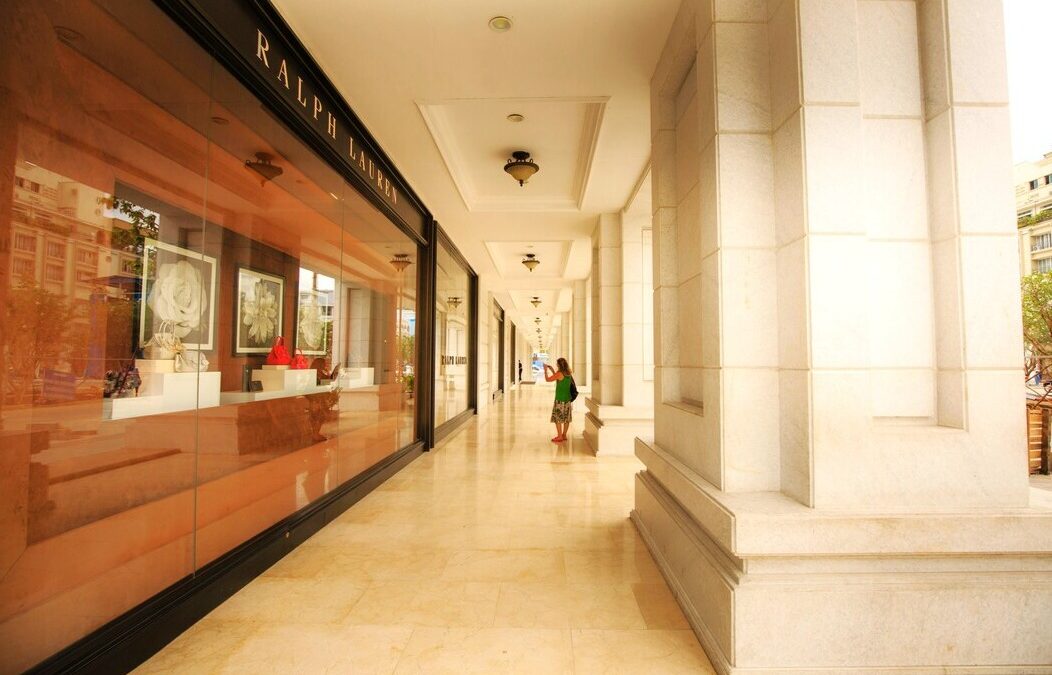Ralph Lauren Cuts Emissions by 34%, Nears Full Use of Sustainable Materials
Ralph Lauren advances sustainability with major gains in carbon emissions reduction, renewable energy use and circular fashion.
Ralph Lauren Corp. has slashed its absolute greenhouse gas emissions by 34 percent from its fiscal 2020 baseline, exceeding its climate target well ahead of schedule, the company said on Monday.
According to its 2025 Global Citizenship & Sustainability Report, the achievement, driven by renewable energy use and lower production volumes, marks one of the most significant environmental milestones for the U.S. fashion house as it advances its “Timeless by Design” sustainability strategy.
The luxury brand also confirmed that 100 percent of the electricity powering its offices, distribution centers, and stores now comes from renewable sources, completing the shift five months ahead of its original deadline.
“We view climate action as a shared responsibility that extends beyond Ralph Lauren’s own operations,” President and Chief Executive Officer Patrice Louvet said in the report. “Our suppliers and partners are critical to driving the systemic change needed across the fashion industry.”
The emissions reduction puts Ralph Lauren ahead of its science-based target to cut absolute Scope 1, 2, and 3 greenhouse gas emissions by 30 percent by 2030.
The company reported total emissions of 1.23 million metric tons of carbon dioxide equivalent in fiscal 2025, down slightly from 1.24 million MTCO₂e a year earlier and sharply lower than 1.86 million MTCO₂e in fiscal 2020.
Renewable Energy and Decarbonization Efforts
In fiscal 2025, Ralph Lauren’s owned and operated sites were fully powered by renewable electricity, supported by energy attribute certificates and a long-term virtual power purchase agreement in Spain.
The 10-year agreement, signed with 12 other members of the Fashion Pact, is expected to match 80 percent of the company’s European power consumption with renewables by 2026.
Beyond its own operations, the company expanded its Carbon Leadership Program, in collaboration with the Apparel Impact Institute, to include about 170 facilities, representing nearly 60 percent of its raw material business spend.
Participating suppliers have set an average carbon reduction goal of 64 percent by 2030, compared to a 2019 baseline.
Ralph Lauren also joined the Future Supplier Initiative, a coalition that provides collective financing for supplier decarbonization. It has now identified and engaged with 80 coal-using suppliers globally and successfully phased out coal use at 66 of them. Only one active coal user remained by the end of fiscal 2025.
“We are embedding sustainability deeper into our everyday operations to create enduring value for generations to come,” said Ralph Lauren, executive chairman and chief creative officer. “Our progress this year shows what is possible when design, purpose and responsibility come together.”
Sustainable Materials and Circular Fashion
The company has made significant progress toward its goal of using 100 percent sustainably sourced key materials by the end of 2025.
In fiscal 2025, 98 percent of all units produced met at least one sustainable material criterion, up from 92 percent in fiscal 2024, a 6.5 percent improvement. Sustainable materials include certified or recycled cotton, wool, viscose, leather, polyester and cashmere.
In its circularity push, Ralph Lauren launched its fifth Cradle to Cradle Certified product, the Oversized Cashmere Boatneck Sweater, and introduced denim made entirely from recycled cotton. It also piloted repair services and expanded its Ralph Lauren Vintage resale offering, part of efforts to extend product lifecycles and promote reuse.
The company said that 86 percent of its key wood suppliers for store interiors used sustainably sourced substrates by the end of fiscal 2025, a steep rise from 63 percent the year before. The target is full compliance by fiscal 2026.
Water and Waste Reduction
Ralph Lauren achieved a 32 percent reduction in total water use across its operations and value chain from its fiscal 2020 baseline, surpassing its 20 percent reduction goal ahead of time.
Year-on-year, total water consumption fell from 10.9 million cubic meters in FY24 to 10.1 million cubic meters in FY25, down about 7.5 percent. The company credited its improvements to more efficient manufacturing processes and stronger supplier engagement on water stewardship.
In waste management, 80 percent of packaging volume met sustainable criteria in fiscal 2025, up from 79 percent the prior year. Ralph Lauren defines sustainable packaging as recyclable, reusable or made from certified and recycled materials. It aims for 100 percent compliance by the end of fiscal 2025.
Chemical and Pollution Controls
Ralph Lauren achieved 95 percent visibility into chemical use in its manufacturing supply chain, up from 91 percent in the previous year, covering suppliers that represent 85 percent of the total spend.
Of all reported chemicals, 88 percent conformed to the zero discharge of hazardous chemicals manufacturing restricted substances list. In its Tier 2 supply chain, about 93 percent of chemical products were compliant with ZDHC standards.
The company has eliminated the use of per- and polyfluoroalkyl substances, polyvinyl chloride and potassium permanganate from its production processes, including both denim and non-denim finishes. These measures align with its Sustainable Chemical Management Policy, aimed at replacing hazardous substances with safer alternatives.
Supplier Engagement and Worker Well-Being
In fiscal 2025, 70 percent of Ralph Lauren’s business was conducted with strategic and key suppliers that met its standards for quality, sustainability and citizenship, up from 56 percent in fiscal 2024. The company’s goal is to reach 80 percent by the end of fiscal 2025.
Through its Supplier Engagement Scorecard, the company evaluated more than 290 Tier 1 facilities, representing 97 percent of supply chain spend. The average environmental performance score across facilities was 55 out of 100, with water management receiving the highest section score at 61.
Ralph Lauren continued to expand its empowerment and life skills programs, which have reached 144,000 workers in its supply chain to date.
The company also achieved 87 percent employee favorability in survey responses related to belonging and equity, while 85 percent of employees reported that managers supported inclusivity in the workplace.
Governance and Accountability
The company integrated sustainability goals into executive and employee incentive compensation programs for a second consecutive year.
Citizenship and sustainability metrics were used as modifiers in annual performance evaluations for senior executives and other staff, reinforcing the link between pay and impact.
The board of directors continues to receive annual updates on sustainability progress from the chief global impact & communications officer, who chairs the Global Citizenship & Sustainability Steering Committee.
The audit committee oversees risk management, while the nominating committee monitors environmental and human rights risks across the supply chain.
Looking Ahead
Ralph Lauren said it will unveil the next phase of its sustainability roadmap in early 2026, following the completion of its current “Timeless by Design” goals.
The company plans to expand its circular economy initiatives, advance supplier decarbonization financing, and strengthen biodiversity targets in alignment with science-based frameworks.
“Every decision we make reflects our belief in authenticity, timeless design and the dream of a better life,” Lauren said. “That purpose drives us to protect the planet and the people who make our brand possible.”
With most of its 2025 targets either achieved or nearing completion, Ralph Lauren’s next challenge will be integrating its sustainability commitments into all aspects of product design and global operations, a test of whether luxury fashion can align long-term growth with environmental accountability.
Also Read:
Global Consultation Begins on Sustainability Reporting for Textiles and Apparel
Nirmal Menon
Related posts

Subscribe
Error: Contact form not found.


